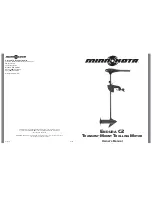
IDE Primary/Secondary Master/Slave PIO
The four IDE PIO (Programmed Input/Output) fields let you set a PIO mode (0-4) for each
of the four IDE devices that the onboard IDE interface supports. Modes 0 through 4 provide
successively increased performance. In Auto mode, the system automatically determines
the best mode for each device.
IDE Primary/Secondary Master/Slave UDMA
Ultra DMA/33/66/100 implementation is possible only if your IDE hard drive supports it
and the operating environment includes a DMA driver (Windows 95 OSR2 or a third-party
IDE bus master driver). If your hard drive and your system software both support Ultra
DMA/33/66/100, select "Auto" to enable BIOS support.
The choices: Auto, Disabled.
Init Display First
This item allows you to decide to active PCI Slot or AGP first.
The choices: PCI Slot, AGP.
IDE HDD Block Mode
This allows your hard disk controller to use the fast block mode to transfer data to and
from your hard disk drive (HDD).
Enabled IDE controller uses block mode.
Disabled IDE controller uses standard mode.
Onboard FDD Controller
This should be enabled if your system has a floppy disk drive (FDD) installed on the system
board and you wish to use it. Even when so equipped, if you add a higher performance
controller, you will need to disable this feature.
The choices: Enabled, Disabled.
Onboard Serial Port 1/Port 2
This item allows you to determine access onboard serial port 1 / port 2 controller with
which I/O address.
The choices: 3F8/IRQ4, 2F8/IRQ3, 3E8/IRQ4, 2E8/IRQ3, Disabled, Auto.
UART 2 Mode
The second serial port on your system offers a variety of infrared port modes. Available
options are : STANDARD, HPSIR, ASKIR.
Mainboard User's Manual
Page 29
BIOS
Setup
















































